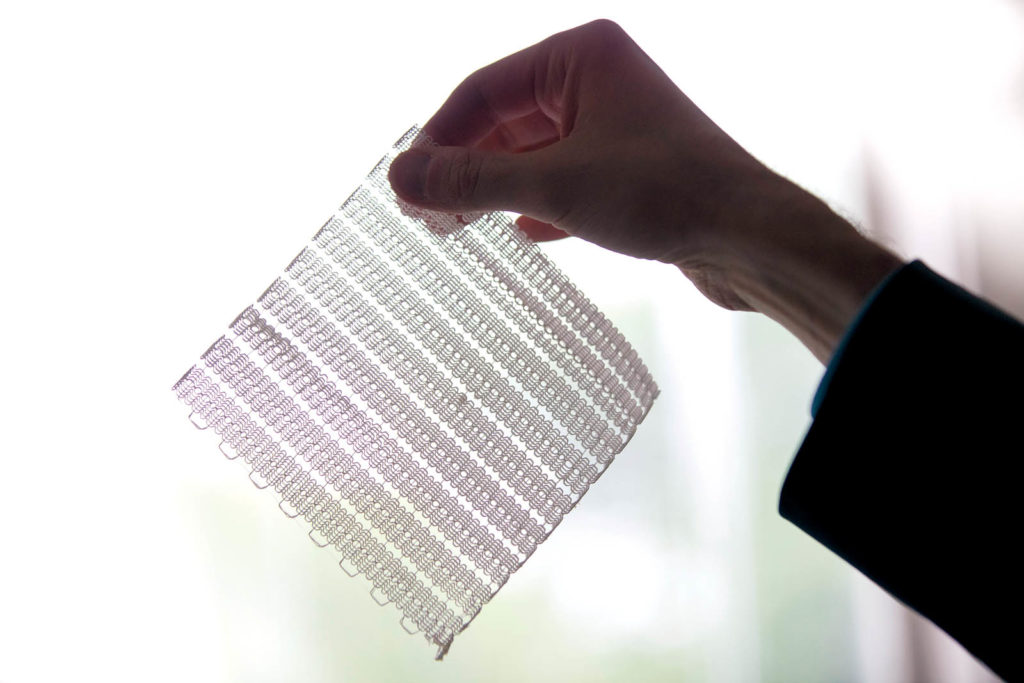
3D-printed flexible mesh
Engineers at the Massachusetts Institute of Technology have designed pliable 3D-printed mesh materials with the flexibility and toughness to be tuned to emulate and support softer tissues such as muscles and tendons. With the ability to tailor the intricate structures in each mesh, the researchers anticipate that the tough, yet stretchy fabric-like material could be used for personalized, wearable supports. As a demonstration, the team printed a flexible mesh for use in an ankle brace and a knee brace that could conform to the knee even as it bends. Researchers also see the potential for implantable devices such as hernia meshes that better match to a person’s body. The study was published in the journal Advanced Functional Materials. Photo: M. Scott Brauer.
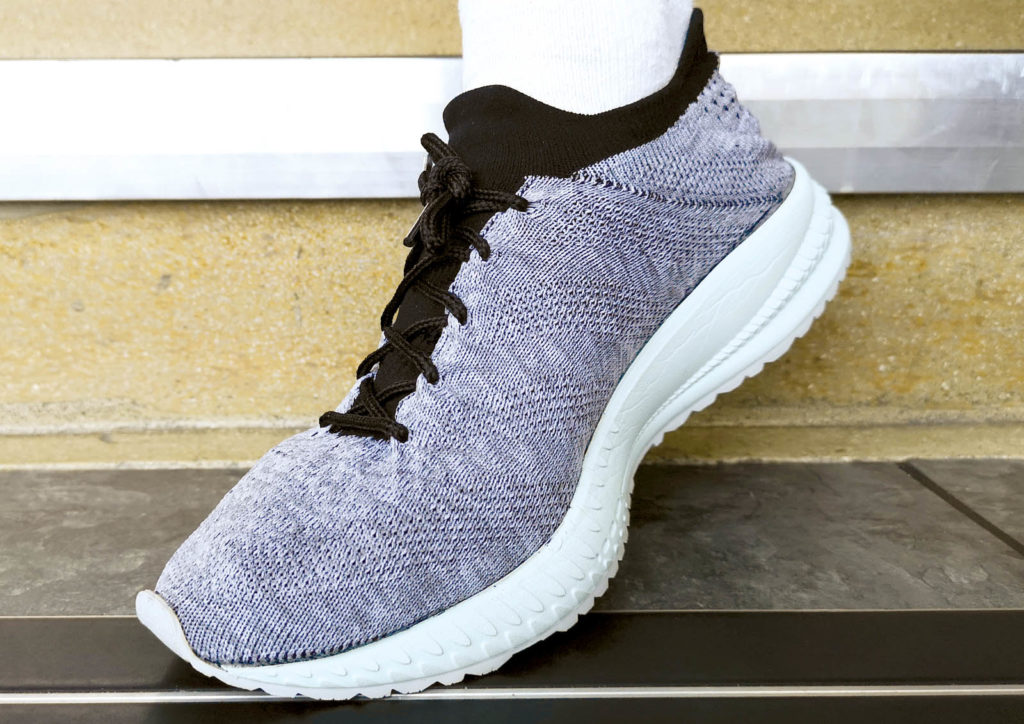
Knitted shoe upper for measuring gait
Nottingham, U.K.-based Footfalls & Heartbeats, a smart textiles developer, has created a knitted shoe upper that can measure gait in a person who is either walking or running. The textile sensor eliminates the need for embedded electronics, says company founder Simon McMaster, and the information gathered can be relayed to the wearer’s user interface of choice. The shoes were made on a Santoni® X-Machine and knitted in less than 12 minutes per shoe, McMaster says. Footfalls & Heartbeats has also worked closely with the University of Nottingham on smart socks that measure both pressure and blood flow in the feet via optical sensors embedded in the socks. Photo: Footfalls & Heartbeats.
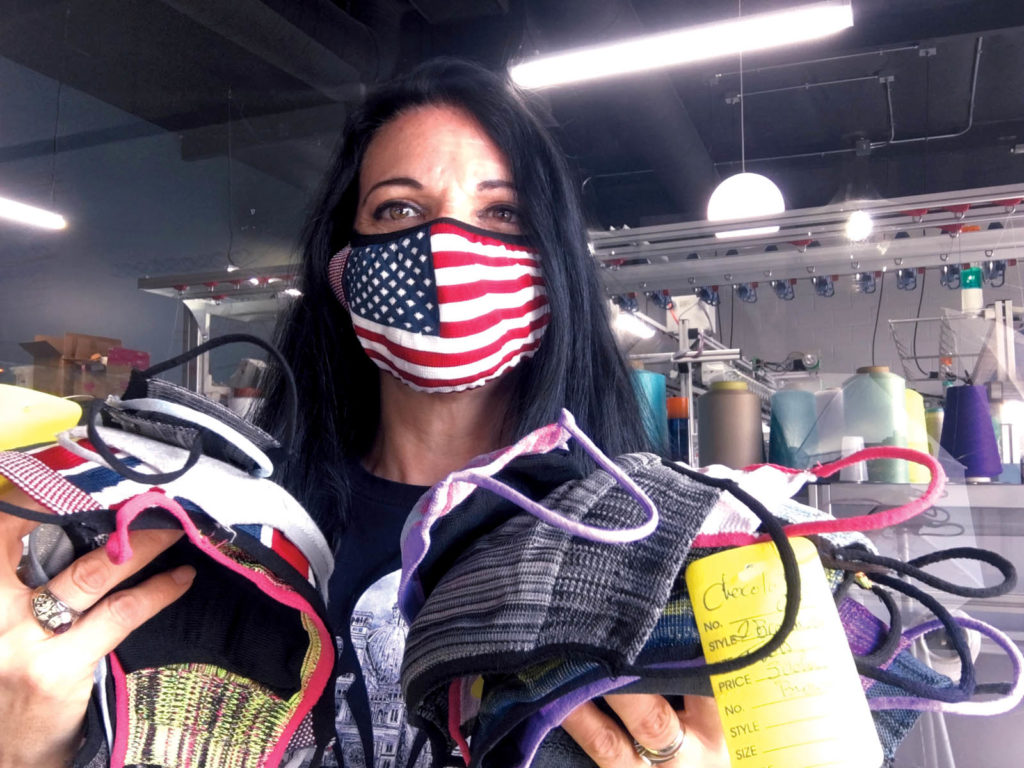
Fabdesigns launches lightweight 3D-knit masks
Fabdesigns Inc. has developed a new, lightweight (12 grams), double-layered, 3D-knit face mask under the brand name Malibu Knits. According to the Agoura Hills, Calif.-based company, in a pandemic a mask needs to “enable us to continue doing what we normally do,” with proper fit and maximum comfort. As the masks are produced on demand with 3D-knitting machinery, there’s no cutting and sewing, no seams and no post-production waste. The performance yarns come from recycled plastic bottles and are the same as those in many performance workout clothes made to handle heat and sweat. Machine washable and reusable, they have soft, stretch ear loops and a pocket to insert a filter. Photo: Fabdesigns Inc.
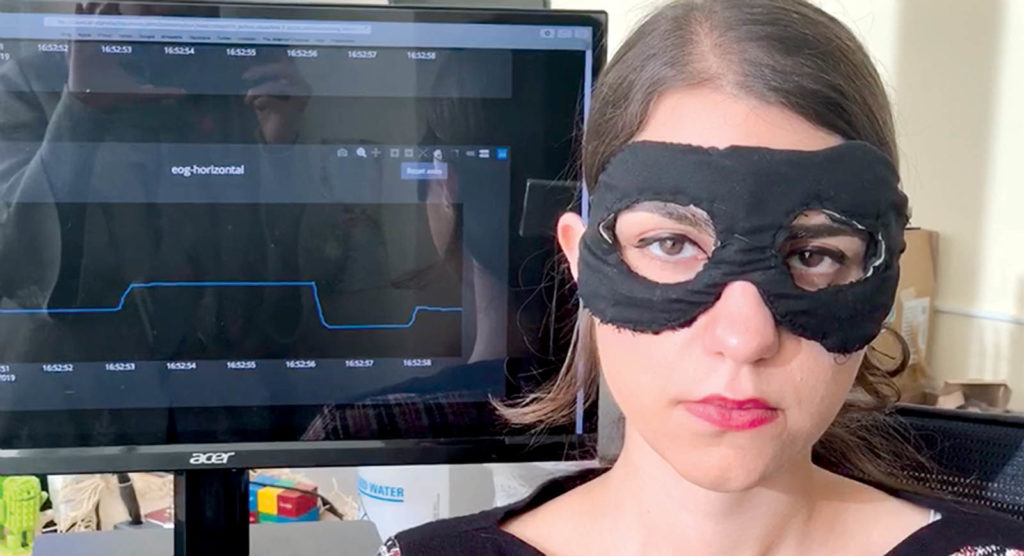
UMass Amherst scientists invent a sensing eye mask
Researchers at the University of Massachusetts Amherst have developed a lightweight eye mask that can capture pulse, eye movement and sleep signals to provide valuable help in sleep and psychosocial studies. Typically, recording signals on or near the face is challenging because of a natural sensitivity most people feel. The team’s eye mask named Chesma integrates electrodes into a lightweight foam mask for recording signals more comfortably and sending the data to the cloud for processing. The mask contains five silver thread-based hydrogel electrodes—dubbed tAgTrodes—needed to translate ion-based biological signals into an electric current. The mask’s reusable and washable hydrogel component distinguishes the tAgTrode from other equivalents. The team’s report has been published in the journal Matter. Photo: S. Zohreh Homayounfar.
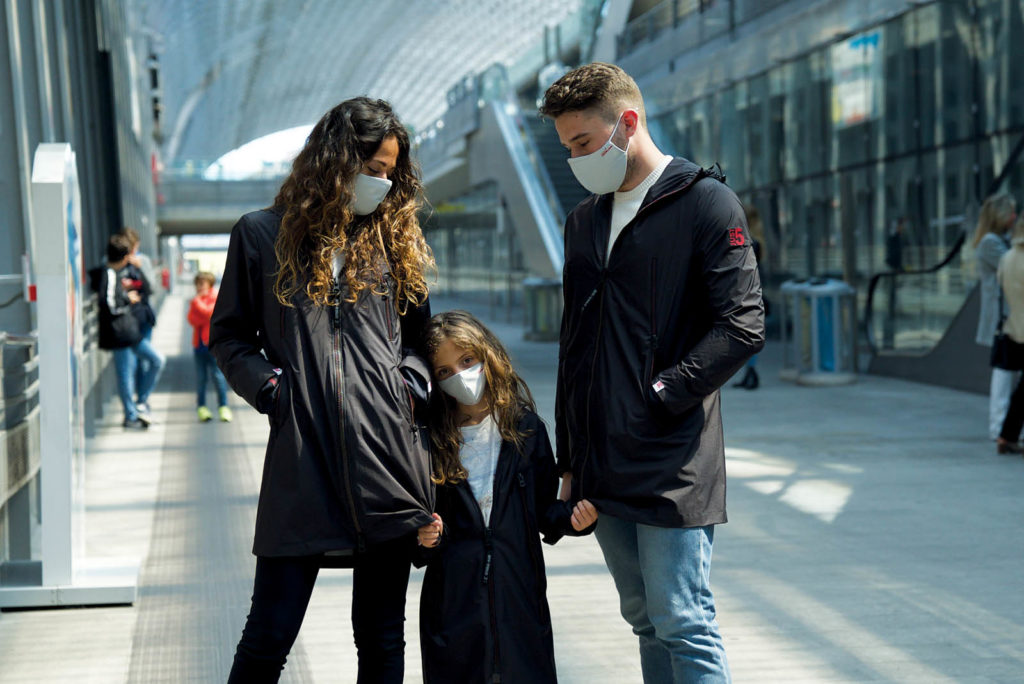
Collaboration creates antiviral jacket
A new jacket with a high-tech barrier is designed to help wearers return to normal life during the coronavirus pandemic while being protected from contaminants. The JUST5 jacket is the result of an initiative among five companies, each contributing a component: 2A-NYGUARD NYSHIELD zippers are self-sanitizing, and Coats ProtectV sewing thread adds antimicrobial and antiviral properties to every stitch. HeiQ Viroblock antimicrobial fabric technology was used to treat the fabrics: Windtex® Vagotex, a breathable, water-repellent and wind-resistant material, and SITIP warp-knitted elastic fabric for the extendable cuffs, which can be pulled out to shield the hands when touching surfaces. Photo: Coats.
 TEXTILES.ORG
TEXTILES.ORG


